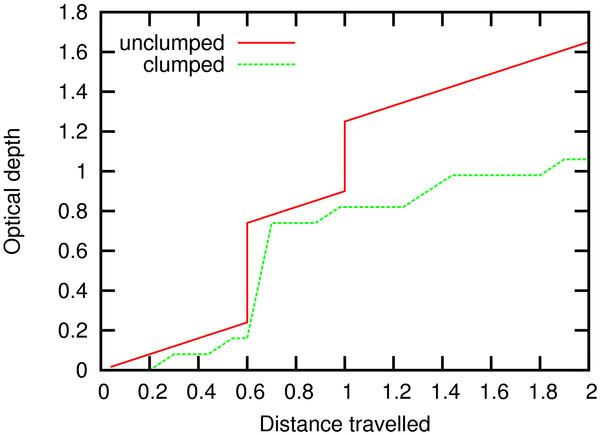Fig. 3

Schematic representation of the increase in optical depth with distance. The latter is given in arbitrary units. The slope of the lines thus represent the linear extinction coefficient κρ. The solid line depicts the case of a smooth medium; the dashed line that of a clumpy medium. In the smooth flow, the slanted regions represent continuum extinction, while at the points where the line becomes vertical a line interaction occurs. The line interaction region is assumed to be infinitely narrow. In the case of a clumpy flow, the flat parts of the curve reflect the inter-clump medium. Within a clump, the continuum extinction is relatively large, therefore the slope is relatively steep. For reasons explained in the text, we have assumed the line interaction region to have a finite width, determined by the Sobolev length. The line that can interact at about distance 1 is missed as it is associated with the inter-clump medium. We note that in a clumpy medium the photon needs to travel a larger geometrical depth to cross a given optical depth.
Current usage metrics show cumulative count of Article Views (full-text article views including HTML views, PDF and ePub downloads, according to the available data) and Abstracts Views on Vision4Press platform.
Data correspond to usage on the plateform after 2015. The current usage metrics is available 48-96 hours after online publication and is updated daily on week days.
Initial download of the metrics may take a while.


